
Projects have become more and more complex, and the IT community is trying to react to these changes with new software development methods. Like a kapellmeister, the methodology tries to make the team of developers, designers, DevOps, QA engineers, analytics, etc, work as a single body, providing client-oriented and stakeholders-controlled melody — the perfect software. But there are just too many of them! Agile, Waterfall, Kanban, Lean… how do you ever know what to choose? Well, today, we decided to explore the world of software development methods and figure out what works best and how to choose the most optimal methodology for your project.
Content:
- Benefits of using software development methodologies
- Agile methodology
- Level SD: an overview of SD methodologies
- Operational level: the most popular delivery methods
- Summing up: How to choose the best method for your project?
But first, what is software development methodology? It is a structured approach that defines the processes, practices, and guidelines to be followed during the development of software applications. These methodologies provide a set of principles and best practices that guide the entire software development lifecycle, from initial concept and design to coding, testing, deployment, and maintenance.
Benefits of using software development methodologies
SD methodologies help teams plan, execute, and deliver software projects. Here are some key benefits you can expect when choosing one of the modern SD methods:
- Improved project management. You start using structured frameworks for project planning, scheduling, and resource allocation. This leads to better control over project timelines and budgets.
- Predictable delivery. Modern methodologies emphasize systematic and organized development processes, resulting in more accurate estimates and predictable project delivery.
- Enhanced quality. Software gets thoroughly tested, reviewed, and validated, leading to higher-quality products with fewer defects.
- Efficient resource utilization. Methodologies help you use time, money, and talent better.
- Clear communication. Modern methodologies emphasize communication and collaboration among team members, stakeholders, and customers, reducing misunderstandings and enhancing project transparency.
- Risk management. Modern methodologies include risk assessment and mitigation strategies, allowing teams to identify potential issues early and plan for contingencies.
- Adaptability. Most modern methodologies, including Agile, prioritize adaptability by promoting incremental development and the ability to respond to changing requirements and market conditions.
- Customer satisfaction. By involving stakeholders throughout the development process, methodologies ensure that the final product aligns with customer expectations and needs.
- Faster time-to-market. Iterative methodologies enable quicker release cycles, allowing software to reach the market and capture value faster.
- Documentation and knowledge management. Methodologies help maintain a record of decisions, rationale, and project history, which aids in knowledge sharing and onboarding new team members.
- Consistency. Thanks to a consistent framework of a particular methodology, you can maintain standards and best practices across projects, reducing variability.
- Scalability. Scrum, for example, is designed to work well with both small and large teams, making them adaptable to different project sizes and complexities.
- Measurable progress. Most methodologies include metrics and KPIs that enable teams to track progress and make data-driven decisions.
Agile methodology
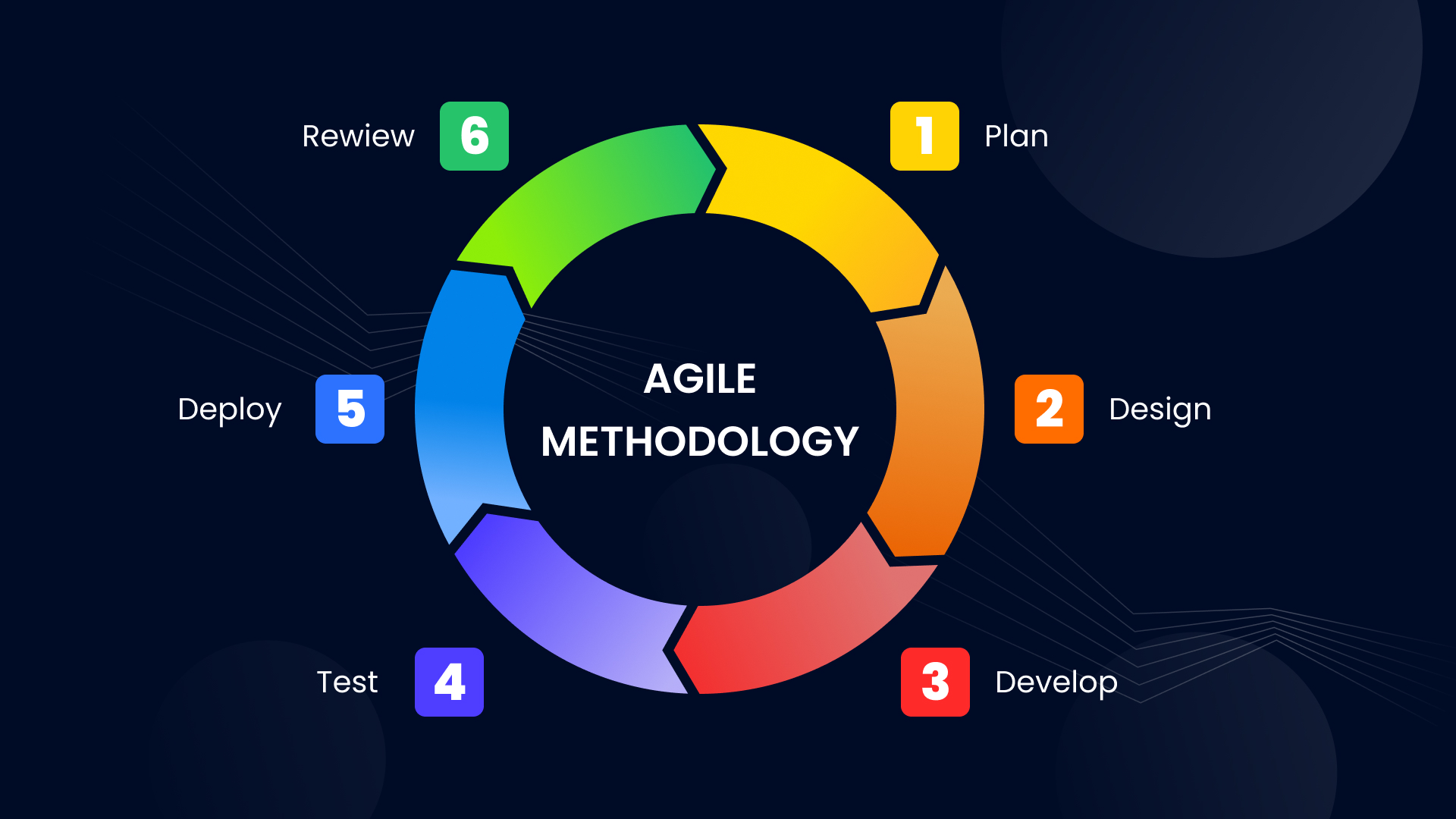
Introduced in the early 2000s, Agile is a dynamic and iterative project management approach emphasizing flexibility and collaboration. Rooted in software development, Agile promotes
- frequent communication,
- continuous feedback, and
- adaptability to changing requirements.
By breaking down projects into smaller, manageable increments, Agile enables teams to deliver tangible results at the end of each cycle, fostering transparency and ensuring that the end product meets evolving user needs.
However, in 2023, Agile has evolved beyond its foundational principles. Teams are now embracing “Agile 2.0,” an approach that focuses not only on delivering features quickly but also on continuous improvement, adaptability, and a holistic understanding of customer needs. This involves refining Agile practices to integrate them with DevOps, Lean principles, and Design Thinking, resulting in more responsive and customer-centric development processes.
Scrum and Kanban are two well-known Agile frameworks, and despite Agile’s popularity, they might have some potential weak points. For example, they may require strong collaboration; it can be challenging to manage scope changes, and they might not be suitable for projects with fixed deadlines and strict regulatory requirements.
Level SD: an overview of SD methodologies
Let’s look at modern software development methods, paying particular attention to their benefits and weaknesses. We start with the statistically most popular methodologies and go down to less often used tools.
Waterfall
While not as prevalent as Agile, the Waterfall methodology is still used for projects with well-defined requirements and a linear development process.
Benefits. Clear project structure and linear progression make it suitable for well-defined and stable projects. Well-suited for projects with fixed scope and requirements.
Weaknesses. Lack of flexibility to accommodate changing requirements, limited customer involvement after initial planning, and high risks for long development cycles without tangible deliveries.
Scrum
Benefits. Employs short iterations (sprints) for incremental development, promoting adaptive planning, rapid feedback, and regular releases. Enhances transparency and customer involvement.
Weaknesses:
- Can be complex to implement correctly
- Requires a well-defined product backlog
- May lead to excessive meetings
- Might not be suitable for projects with highly specialized roles
Kanban
Benefits. Focuses on visualizing and optimizing workflow, enabling teams to manage work in progress, improve efficiency, and promptly respond to changes.
Weaknesses:
- Might not provide a structured framework for the development
- Could lead to an underestimation of the project scope
- May not be suitable for projects with predefined deadlines
Extreme Programming (XP)
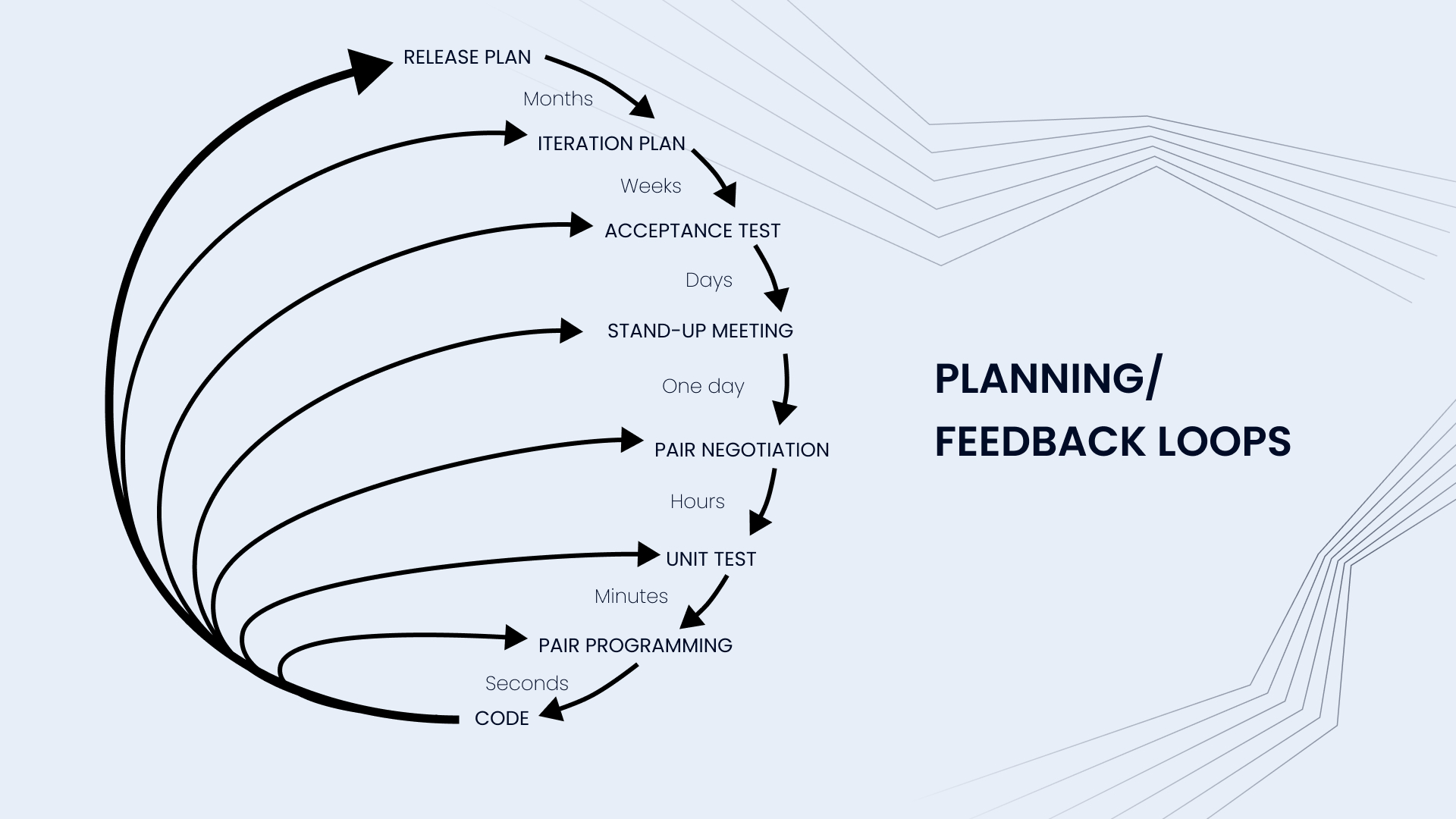
Benefits. Emphasizes coding practices, continuous integration, test-driven development (TDD), and customer involvement. Results in higher code quality, faster development, and frequent releases.
Weaknesses:
- Requires significant discipline and commitment to practices like test-driven development (TDD)
- Can be challenging to apply in larger projects
- May not suit all development environments
Lean Development
Benefits. Aims to eliminate waste and improve efficiency. Focuses on value delivery, reducing lead times, and maximizing customer value.
Weaknesses:
- May lack detailed guidelines
- Might require expertise in Lean principles
- Could be less effective in projects with complex requirements.
Feature-Driven Development (FDD)
FDD focuses on feature-level development and has gained traction in certain industries and contexts.
Benefits. Breaks down large projects into smaller, manageable features, promoting clear design and implementation. Provides a structured approach to feature delivery.
Weaknesses:
- Might not be as adaptable to rapidly changing requirements
- Requires detailed upfront planning
- Can be challenging to implement without proper training
Rapid application development (RAD)
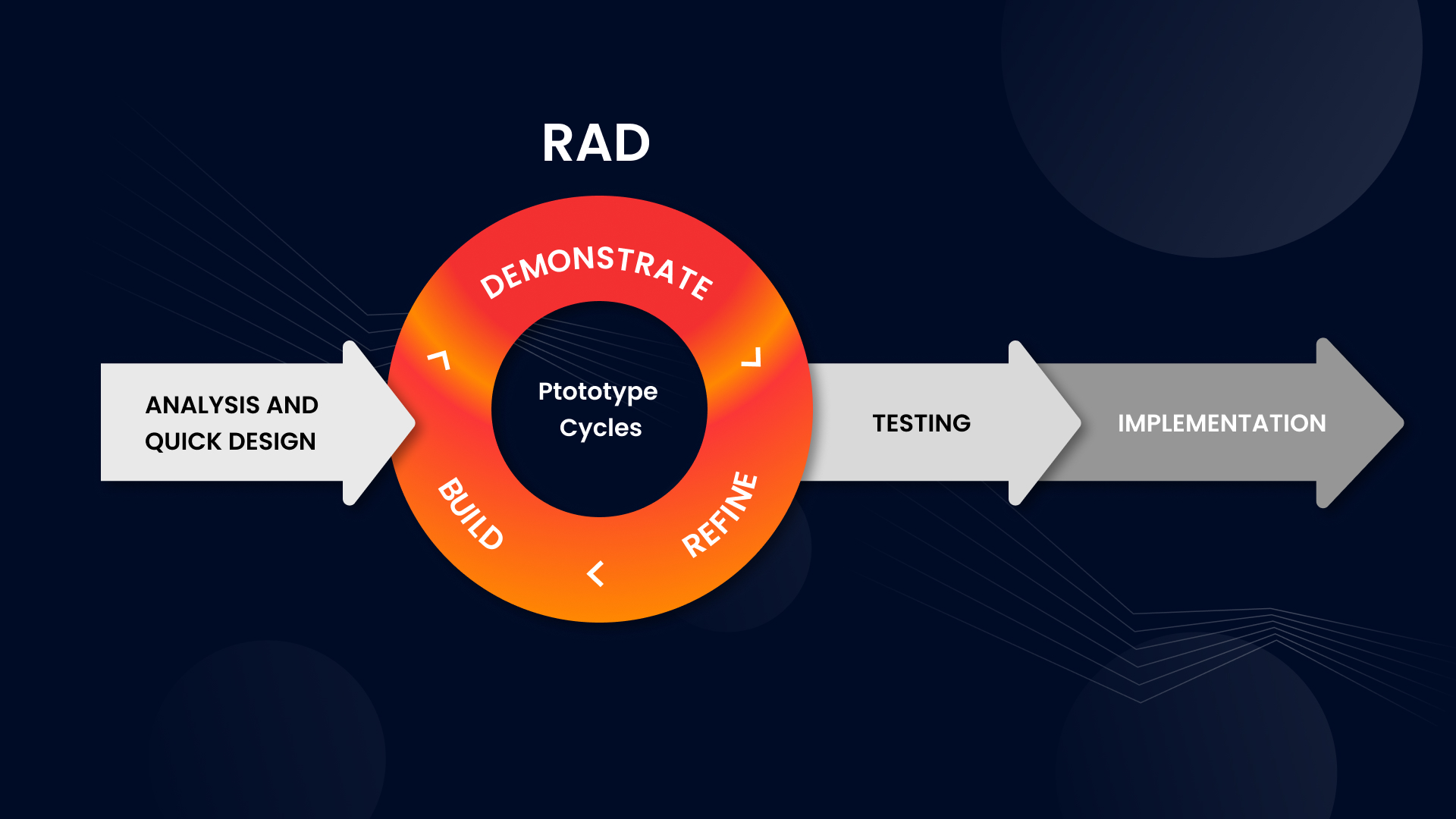
Benefits. Accelerates development by focusing on prototyping and iterative cycles. This is an ideal methodology for projects requiring quick delivery and constant user involvement.
Weaknesses. Relies heavily on user involvement, could lead to scope creep if not managed properly, and might not suit projects requiring extensive documentation.
Agile hybrid models
Many organizations are customizing and combining elements from different methodologies to suit their specific project and team needs (e.g., Scrumban, Agile with Waterfall elements).
- Benefits. Combines elements of different methodologies to suit specific project needs, allowing teams to leverage the benefits of all applied approaches.
- Weaknesses. Complexity in combining methodologies, high risks for confusion if not implemented carefully, and challenges in balancing the benefits of different approaches.
Operational level: the most popular delivery methods
Coding is only part of software development. After coding itself, you need a set of practices and principles that would improve collaboration between software development (Dev) and IT operations (Ops) teams. Operational and delivery methodologies provide structured frameworks and approaches to managing and executing projects effectively. These methodologies help ensure that projects are planned, executed, and completed in a controlled and efficient manner. Here are some commonly used operational and delivery methodologies for IT projects.
DevOps: Development and Operations
DevOps practices have become essential in modern software development to meet the demands of rapid and frequent software releases while maintaining high quality and reliability. The main goal of DevOps is to enhance the efficiency of software development and deployment processes, ultimately leading to faster delivery of high-quality software. DevOps aligns with Agile and Lean SD methodologies, promoting iterative development, quick feedback cycles, and eliminating waste in the development process.
The main benefit of this methodology is that it Integrates development and IT operations, automating processes and reducing deployment cycles. DevOps enhances collaboration and promotes continuous integration and delivery.
Continuous Integration/Continuous Delivery (CI/CD)
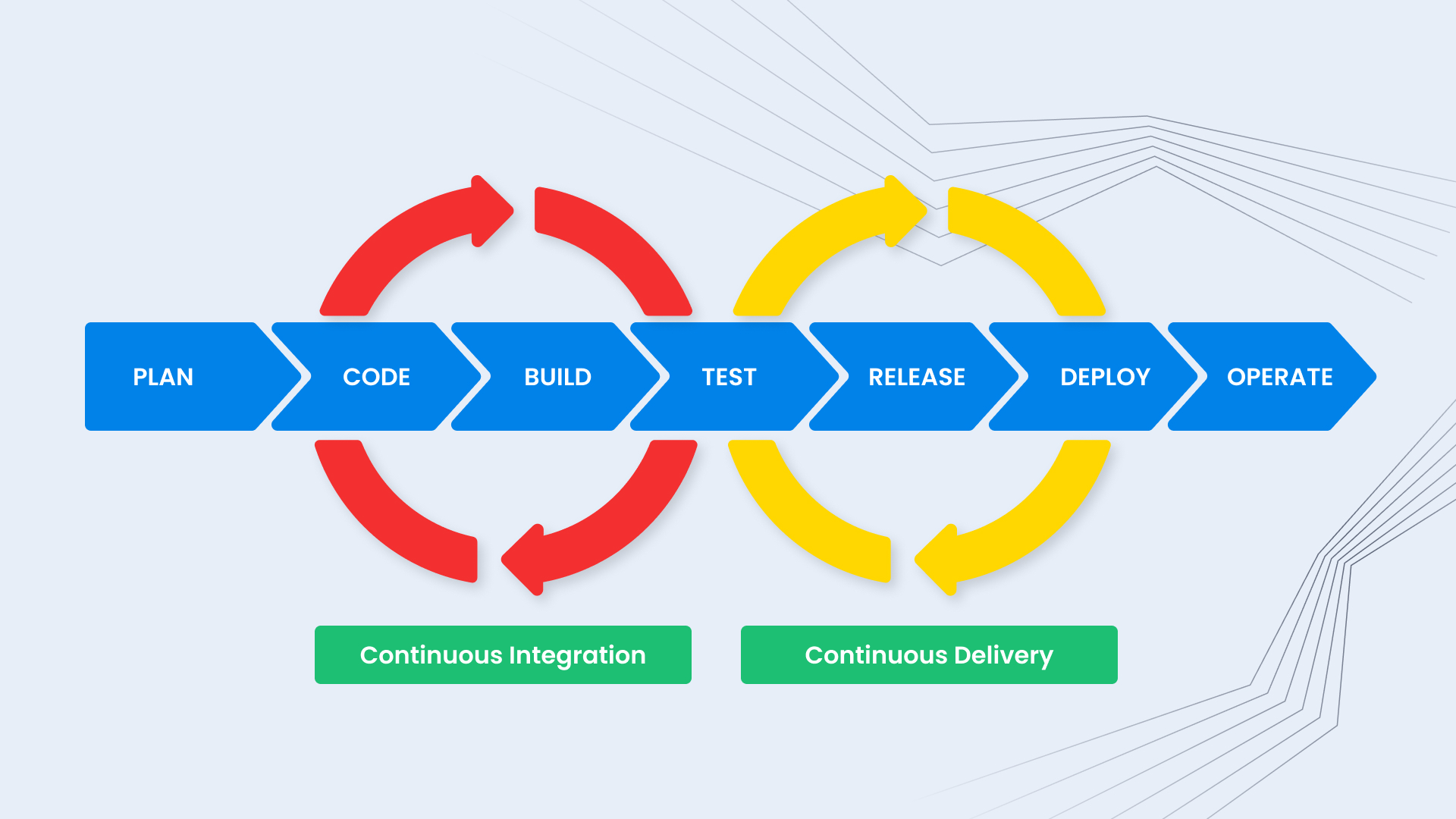
CI/CD is another notorious part of DevOps methodology. Continuous Integration (CI) involves regularly integrating code changes into a shared repository. This practice is supported by automated testing to ensure that new code changes don’t introduce regressions or errors. Continuous Delivery (CD) extends CI by automatically deploying code changes to production or staging environments after passing automated tests. This enables a faster and more reliable release process.
Another key benefit of DevOps is its focus on security and compliance. Security is integrated throughout the DevOps process, emphasizing the incorporation of security practices early in development and continuously addressing vulnerabilities. As security holds such an important place in software development, over the years, the DevSecOps methodology became more popular.
DevSecOps: Security from the start
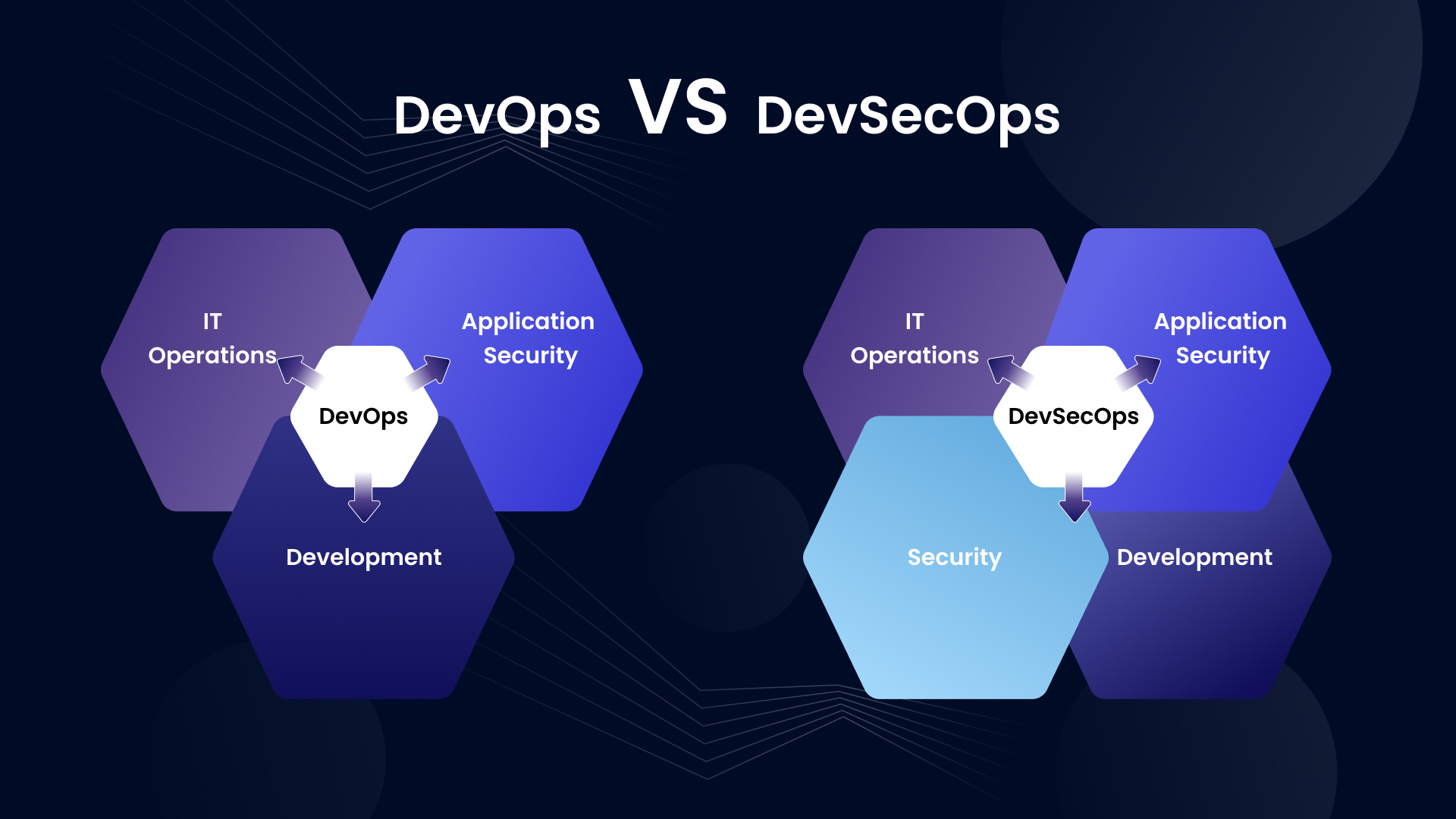
With the increasing frequency and severity of cybersecurity threats, integrating security into the development lifecycle has become paramount. DevSecOps, an extension of DevOps, emphasizes collaboration between development, operations, and security teams from the inception of a project. By automating security testing, code analysis, and compliance checks, DevSecOps ensures that security is not an afterthought but a fundamental aspect of software development.
Summing up: How to choose the best method for your project?
Here is a quick checklist to help you choose the best-fitting methodology for your project.
- Determine if your project is well-defined and stable (suitable for Waterfall) or requires flexibility and iterative development (suitable for Agile).
- Involve key stakeholders in the decision-making process. Gather input and insights from different perspectives.
- If your project aims to innovate or requires creative problem-solving, Agile or Lean methodologies may encourage experimentation.
- Determine if your project must adhere to specific industry standards or regulations. Some methodologies, like Agile, can be adapted to meet compliance requirements.
- Tailor the methodology to suit your project’s unique needs. Consider hybrid approaches that combine elements of different methodologies.
Talking about MWDN’s experience with creating dedicated teams, we always adapt to the needs and practices of our clients. As most of our partners are startups or projects without strict unchangeable roadmaps, our IT specialists usually work according to Scrum and Kanban methodologies.
